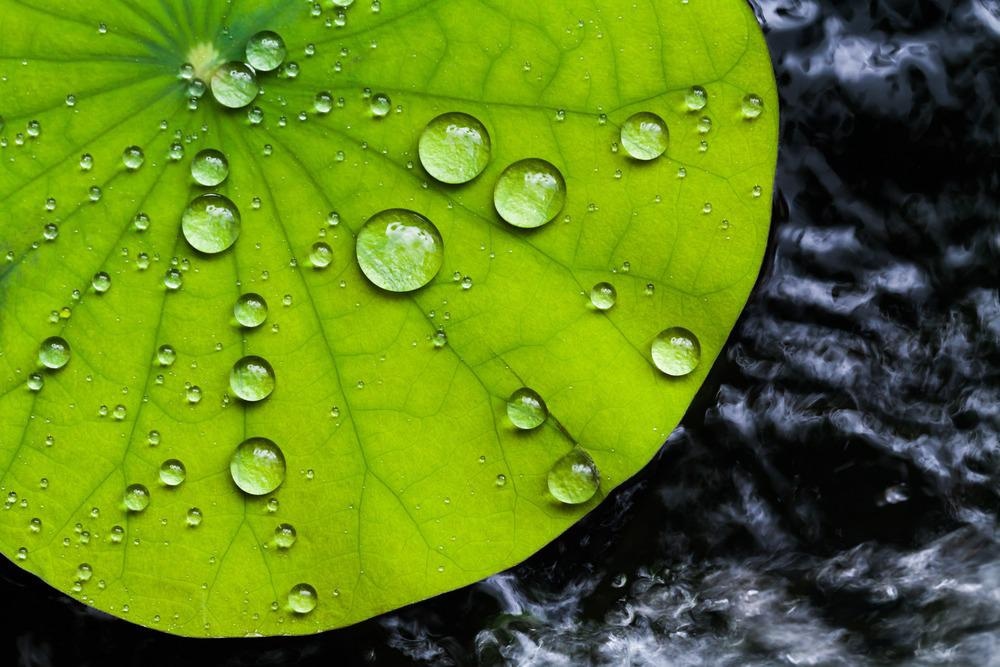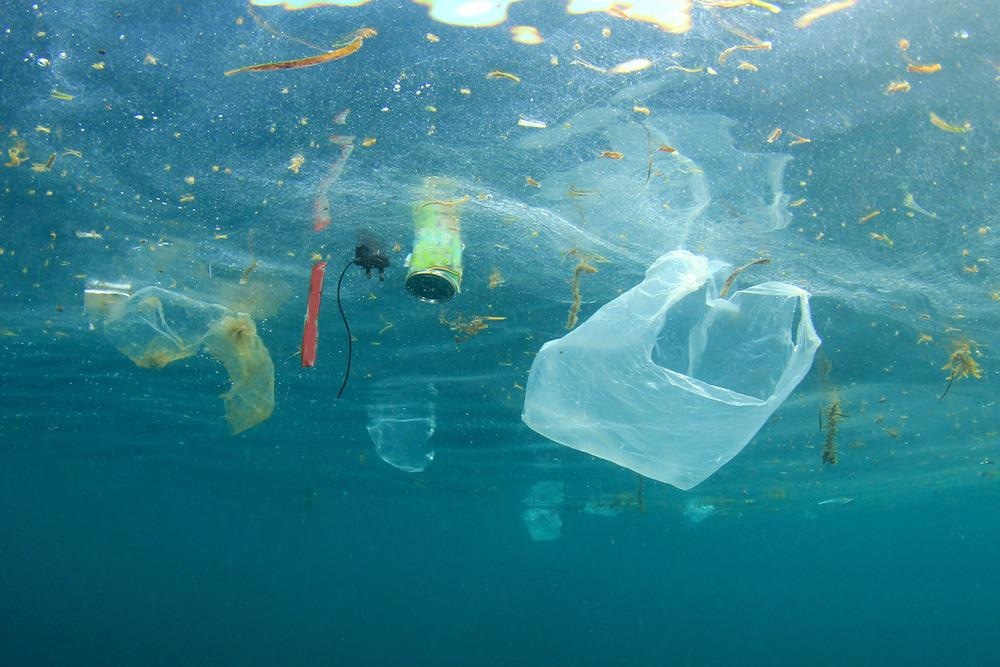AZoM talks to Mehran Ghasemlou, a research fellow at RMIT University, about his research that has developed a self-cleaning and biodegradable bioplastic that is inspired by the lotus leaf.
Please can you introduce yourself and how you came to be involved in this research?
I am currently a Ph.D. research fellow at RMIT University. My work in bioplastics began during my thesis work at RMIT, where our lab began to engineer new biomaterials that mimicked the lotus effect and investigate compostability in natural soil environments. I really enjoyed working on this topic because I felt not only could it contribute to the development of a green circular economy, but also because it could lead to tangible changes in people’s lives; this is the reason why I chose to dedicate my work to the bioplastics field after joining RMIT.
What are bioplastics, and how do they differ from conventional plastics?
Bioplastics are materials produced from plants or other renewable biological sources, such as corn starch, cellulose, lactic acid, and recycled food waste. Conventional plastics are those with petroleum or natural oil origins, a non-renewable resource that is becoming increasingly expensive. One incredible advantage of bioplastics is their compostability as they can quickly and harmlessly blend with soil or compost. Some bioplastics can break down in a matter of weeks. However, conventional plastics can stay in nature for many years and potentially enter the food chain.
Could you describe the key properties of your novel bioplastic and their significance?
Bioplastics often are susceptible to moisture and a feature that could overcome this weakness is important for their future development. I believe one of the beauties of our invention is the integration of two functions. We need a bioplastic that stops moisture from getting in and spoiling our products (food, medical, and so on), but we also want that plastic to compost at its end-of-life. Our bioplastic is tough enough to use for packaging but then disintegrates easily in the presence of bugs and bacteria in soil.

Image Credit: aeiddam0853578919/Shutterstock.com
Biomimicry has inspired many new innovations in materials science. Which aspects of the lotus leaf did you draw upon to produce the bioplastic?
Nature has always been a source of inspiration for us. Nature is a school of material science. Lotus leaves are renowned for having some of the most water-repellent surfaces on earth and are almost impossible to get dirty. This is due to the unique microstructure of the leaf’s surface - tiny pillars topped with a waxy layer. Any water that lands on the leaf beads out and simply rolls off the leaf.
The surface tension of the water is too high and it cannot penetrate the micro tiny pillars of the leaf; this is similar to the way that water striders can stand on water. The droplets sweep up dirt as they slide down, effectively self-cleaning the leaf without any effort from the plant. Through the combination of different raw materials, we were able to synthetically make a bioplastic that mimics the lotus-like surface structure and can keep itself clean.
In the past, starch-based bioplastics have had weaknesses in regard to fragility and moisture content. Why is this, and how does your plastic overcome these limitations?
Currently, research on starch-based bioplastics faces two challenges: fragility and high moisture sensitivity. We synthetically engineered a plastic made from cheap and widely-available raw materials - starch and cellulosic nanoparticles - that normally exhibit superior performance and can be suitably used in a wide range of applications. Using plant-based raw materials not only keeps the mass production costs down, but also supports rapid biodegradability in home-based compost.
Bioplastics could have a significant role in reducing plastic waste. Are there any sectors or applications that would particularly benefit from utilizing alternatives like this bioplastic?
Bioplastics have been intensely investigated over the past two decades to complement or replace conventional plastics in packaging. Today, there is pretty much nothing that bioplastics can’t do.
For every conventional plastic, there is a bioplastic alternative that offers the same or even better performance and functionalities. Today, bioplastics are mainly being used in the various applicational domains: packaging (including flexible and rigid packaging), consumer goods, automotive, building and construction, agriculture, and electronics.
However, the latest market analysis by European Bioplastics shows that packaging accounts for the largest fields of application for bioplastics.

Image Credit: Rich Carey/Shutterstock.com
How easy to produce is this plastic alternative? How feasible will it be to scale this up to an industrial level?
The bioplastic is made from cheap and widely-available raw materials – starch and cellulose – to keep production costs low. This triggers the commercial feasibility of this type of bioplastic. Our protocol removed several restrictions of today’s waterproof coating procedures, such as the usage of expensive materials and/or tedious preparation methods.
The proposed method in this invention does not require any heating or complicated equipment and can be easily upscaled to a roll-to-roll production line for applications to a wide range of materials.
Could you describe how this new plastic is able to biodegrade, as well as the necessary conditions?
Our bioplastic is tough enough to use for packaging, but our tests also confirm it disintegrates easily in the presence of bugs and bacteria in soil under normal conditions. This means it is fully compostable and can break down even in a backyard compost - it does not need any industrial processes.
How necessary do you believe it is to develop waste solutions that do not rely on large amounts of energy to collect, recycle and repurpose?
Plastic waste pollution has long cast a black shadow on the versatility of current plastics as a material of choice. Recycling is often inefficient, reducing less than a fifth of recyclable material produced in the world. I think landfills should be eliminated and replaced by a more robust and comprehensive waste collection strategy.
Bioplastics and industrial composting can be considered as untapped potential. Bioplastics can reduce the dependence on fossil resources whilst reducing a product's carbon footprint.
Are there any limitations that are yet to be overcome before this material becomes widely used?
Despite the overwhelming success of this project in developing self-cleaning bioplastics, the project has not yet achieved commercial development. We are collaborating with colleagues or interested companies to further explore the exciting new potential of our bioplastic materials. It can take some time for food industries to recognize the importance of creating value, differentiating from other potential competitors, and taking serious steps to achieve their sustainability goals. We need further development and testing for a more viscous product, to keep down the mass production cost, to work on the ease of printability, and meet the usual regulations for use of the material in food applications.
More from AZoM: Plastic Alternatives: Where Are We Now?
To what extent do you believe bioplastics will be able to tackle our global plastic waste problem? How might your research contribute to this?
The idea of compostable bioplastic sounds very interesting, however, given a serious shortage of global industrial composting, bioplastics are not yet a silver bullet to our plastic problem. Without adequate composting infrastructure and consumer know-how, standard bioplastic can end up with a similar fate to other plastics.
Industrial composting is essential to heat up these bioplastics to a temperature that allows microbes to break them down. Without that intense heat, bioplastics won't degrade on their own nature in a meaningful timeframe, either in landfills or even home compost.
If they end up in marine environments, they'll function similarly to petroleum-based plastic, breaking down into micro-sized pieces, lasting for decades, and presenting a danger to marine life. The difference with our new bioplastic is it does not need industrial intervention to biodegrade, with trials showing it breaks down naturally and quickly in soil.
What is personally the most exciting aspect of this new research to you?
The most exciting part of this new research is creating microscopic spikes on starch-based bioplastics, causing liquids to bounce off. This roughened surface creates miniature pockets of air that minimizes the contact area between the surface and a liquid, almost like standing on a bed of needles.
What are the next steps? Will you conduct further research on biodegradable and self-healing plastics?
What we did works in the laboratory. However, we need further research and development to address the commercial viability of our bioplastics, and this really does require the collaboration of manufacturers with experts in formulations. We are collaborating with our colleagues to further explore the further potential of our materials.
Where can readers find more information?
Ghasemlou et al. Biodegradation of novel bioplastics made of starch, polyhydroxyurethanes and cellulose nanocrystals in soil environment. Sci. Total Environ., 815, 152684. https://www.researchgate.net/publication/357581582_Biodegradation_of_novel_bioplastics
Ghasemlou et al. Robust and Eco-friendly Superhydrophobic Starch Nanohybrid Materials with Engineered Lotus Leaf Mimetic Multiscale Hierarchical Structures. ACS Appl. Mater. Interfaces. 13, 36558–36573. https://www.researchgate.net/publication/353387188_Robust_and_Eco-Friendly_Superhydrophobic_Starch_Nanohybrid_Materials
Link to youtube: https://www.youtube.com/watch?v=iryIxrMsiVI
About Mehran Ghasemlou
 Mehran Ghasemlou is a Ph.D. research fellow in the STEM College at RMIT University. Before joining RMIT, he served as a Research Assistant in the School of Packaging, Michigan State University, USA. He has years of experience in polymer synthesis and characterization. Mehran has made several original contributions of major significance in the field of packaging and material sciences. He is among the top applicants in RMIT University and was awarded a 2021 RMIT Prize for Research Impact and 2022 RMIT Publication Prize. During his time at RMIT, he has focused on researching the development of packaging and materials engineered to mimic the self-cleaning properties of the lotus leaf.
Mehran Ghasemlou is a Ph.D. research fellow in the STEM College at RMIT University. Before joining RMIT, he served as a Research Assistant in the School of Packaging, Michigan State University, USA. He has years of experience in polymer synthesis and characterization. Mehran has made several original contributions of major significance in the field of packaging and material sciences. He is among the top applicants in RMIT University and was awarded a 2021 RMIT Prize for Research Impact and 2022 RMIT Publication Prize. During his time at RMIT, he has focused on researching the development of packaging and materials engineered to mimic the self-cleaning properties of the lotus leaf.
This work has the potential to significantly reduce the risk of contamination from packaging in food handling and medical settings while also reducing the impact packaging has on the environment, features which are highly sought after in the packaging industry. He is now applying his expertise to develop the next generation of bioplastics and biobased materials, focusing on engineering new sustainable materials.
Disclaimer: The views expressed here are those of the interviewee and do not necessarily represent the views of AZoM.com Limited (T/A) AZoNetwork, the owner and operator of this website. This disclaimer forms part of the Terms and Conditions of use of this website.